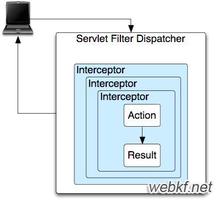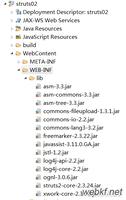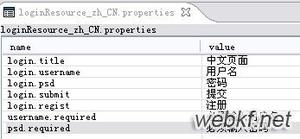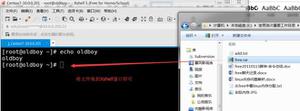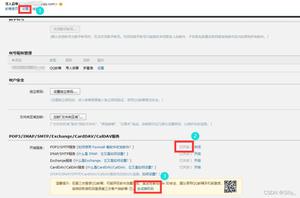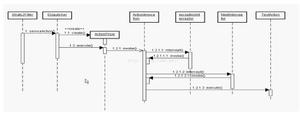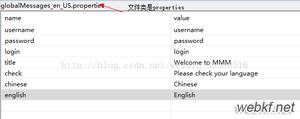Struts2实现单文件或多文件上传功能
一、简述
Struts2的文件上传其实也是通过拦截器来实现的,只是该拦截器定义为默认拦截器了,所以不用自己去手工配置,<interceptor name="fileUpload" class="org.apache.struts2.interceptor.FileUploadInterceptor"/>
二、指定用户上传文件的大小,有两种方式
1)默认是在default.properties 文件的 struts.multipart.maxSize=2097152 键值指定为2097152 也就是2M,通过计算 2097152/(1024*1024) = 2 M
那我们可以改变其默认值,只要在src目录下,新建一个 struts.properties 文件,指定上传大小 如下:

一次上传只可以上传10M,不管一次上传多少个文件,按总和计算
2)在struts.xml文件中指定,如图:

其实name就对应struts.properties的键,value对应 值
注意:如果即在struts.properties设定文件上传大小,又在struts.xml 设定文件上传大小,则struts.properties的优先级高于struts.xml,一般在一处指定上传大小即可,推荐 struts.properties
三、Struts2之单文件上传
1.fileupload.jsp
<%@ page language="java" import="java.util.*" pageEncoding="UTF-8"%>
<%
String path = request.getContextPath();
String basePath = request.getScheme()+"://"+request.getServerName()+":"+request.getServerPort()+path+"/";
%>
<!DOCTYPE HTML PUBLIC "-//W3C//DTD HTML 4.01 Transitional//EN">
<html>
<head>
<base href="<%=basePath%>" rel="external nofollow" rel="external nofollow" rel="external nofollow" rel="external nofollow" >
<title>My JSP 'fileupload.jsp' starting page</title>
<meta http-equiv="pragma" content="no-cache">
<meta http-equiv="cache-control" content="no-cache">
<meta http-equiv="expires" content="0">
<meta http-equiv="keywords" content="keyword1,keyword2,keyword3">
<meta http-equiv="description" content="This is my page">
<!--
<link rel="stylesheet" type="text/css" href="styles.css" rel="external nofollow" rel="external nofollow" rel="external nofollow" rel="external nofollow" >
-->
</head>
<body>
<!-- enctype 默认是 application/x-www-form-urlencoded -->
<form action="FileUpload2" enctype="multipart/form-data" method="post" >
用户名:<input type="text" name="usename"> <br/>
上传文件:<input type="file" name="file1"><br/>
<input type="submit" value="提交"/>
</form>
</body>
</html>
2.具体处理上传的 FileUpload.java
package com.struts2.fileupload;
import java.io.File;
import java.io.FileInputStream;
import java.io.FileOutputStream;
import java.io.InputStream;
import java.io.OutputStream;
import org.apache.struts2.ServletActionContext;
import com.opensymphony.xwork2.ActionSupport;
/**
* 单个文件上传
* @author Administrator
* 上传文件其实是上传了两份,
*
* 首先将上传的文件保存到 default.properties 文件中 struts.multipart.saveDir键指定的目录中
* 默认是空的
* 保存在 Tomcat 6.0\work\Catalina\localhost\struts2目录下以.tmp后缀名的文件
*
* 如果要在 struts.multipart.saveDir 指定目录, 则可以在 src文件夹下 建一个 struts.properties,
* 覆盖 default.properties 的某些键值
*
* 还有一份是 存放在自己设定的目录下
*/
public class FileUpload extends ActionSupport {
private String usename ;
private File file1 ; //具体上传文件的 引用 , 指向临时目录中的临时文件
private String file1FileName ; // 上传文件的名字 ,FileName 固定的写法
private String file1ContentType ; //上传文件的类型, ContentType 固定的写法
public String getUsename() {
return usename;
}
public void setUsename(String usename) {
this.usename = usename;
}
public File getFile1() {
return file1;
}
public void setFile1(File file1) {
this.file1 = file1;
}
public String getFile1FileName() {
return file1FileName;
}
public void setFile1FileName(String file1FileName) {
this.file1FileName = file1FileName;
}
public String getFile1ContentType() {
return file1ContentType;
}
public void setFile1ContentType(String file1ContentType) {
this.file1ContentType = file1ContentType;
}
@Override
public String execute() throws Exception {
//获取文件存储路径
String path = ServletActionContext.getRequest().getRealPath("/upload");
//输出流
OutputStream os = new FileOutputStream(new File(path,file1FileName));
//输入流
InputStream is = new FileInputStream(file1);
byte[] buf = new byte[1024];
int length = 0 ;
while(-1 != (length = is.read(buf) ) )
{
os.write(buf, 0, length) ;
}
is.close();
os.close();
return SUCCESS;
}
}
3.最终显示结果的页面,filedemo.jsp
<%@ page language="java" import="java.util.*" pageEncoding="UTF-8"%>
<%@ taglib prefix="s" uri="/struts-tags" %>
<%
String path = request.getContextPath();
String basePath = request.getScheme()+"://"+request.getServerName()+":"+request.getServerPort()+path+"/";
%>
<!DOCTYPE HTML PUBLIC "-//W3C//DTD HTML 4.01 Transitional//EN">
<html>
<head>
<base href="<%=basePath%>" rel="external nofollow" rel="external nofollow" rel="external nofollow" rel="external nofollow" >
<title>My JSP 'filedemo.jsp' starting page</title>
<meta http-equiv="pragma" content="no-cache">
<meta http-equiv="cache-control" content="no-cache">
<meta http-equiv="expires" content="0">
<meta http-equiv="keywords" content="keyword1,keyword2,keyword3">
<meta http-equiv="description" content="This is my page">
<!--
<link rel="stylesheet" type="text/css" href="styles.css" rel="external nofollow" rel="external nofollow" rel="external nofollow" rel="external nofollow" >
-->
</head>
<body>
上传成功: <br/>
usename: <s:property value="usename" /><br/>
file: <s:property value="file1FileName"/><br/>
contentType: <s:property value="file1ContentType"/>
</body>
</html>
四、Struts2之多文件上传
1.fileupload.jsp
<%@ page language="java" import="java.util.*" pageEncoding="UTF-8"%>
<%
String path = request.getContextPath();
String basePath = request.getScheme()+"://"+request.getServerName()+":"+request.getServerPort()+path+"/";
%>
<!DOCTYPE HTML PUBLIC "-//W3C//DTD HTML 4.01 Transitional//EN">
<html>
<head>
<base href="<%=basePath%>" rel="external nofollow" rel="external nofollow" rel="external nofollow" rel="external nofollow" >
<title>My JSP 'fileupload.jsp' starting page</title>
<meta http-equiv="pragma" content="no-cache">
<meta http-equiv="cache-control" content="no-cache">
<meta http-equiv="expires" content="0">
<meta http-equiv="keywords" content="keyword1,keyword2,keyword3">
<meta http-equiv="description" content="This is my page">
<!--
<link rel="stylesheet" type="text/css" href="styles.css" rel="external nofollow" rel="external nofollow" rel="external nofollow" rel="external nofollow" >
-->
</head>
<body>
<!-- enctype 默认是 application/x-www-form-urlencoded -->
<form action="FileUpload2" enctype="multipart/form-data" method="post" >
用户名:<input type="text" name="usename"> <br/>
上传文件:<input type="file" name="file1"><br/>
上传文件: <input type="file" name="file1"><br/> <!-- 两个名字相同 都是file1 -->
<input type="submit" value="提交"/>
</form>
</body>
</html>
两个上传文件的name属性值要是一样的,后台方便处理
2.具体处理上传文件的FileUpload2.java
多文件上传用集合的方式
package com.struts2.fileupload;
import java.io.File;
import java.io.FileInputStream;
import java.io.FileOutputStream;
import java.io.InputStream;
import java.io.OutputStream;
import java.util.List;
import org.apache.struts2.ServletActionContext;
import com.opensymphony.xwork2.ActionSupport;
/**
* 多文件上传,用集合的方式
* @author Administrator
*
*/
public class FileUpload2 extends ActionSupport {
private String usename ;
private List<File> file1 ;
private List<String> file1FileName ;
private List<String> file1ContentType ;
public String getUsename() {
return usename;
}
public void setUsename(String usename) {
this.usename = usename;
}
public List<File> getFile1() {
return file1;
}
public void setFile1(List<File> file1) {
this.file1 = file1;
}
public List<String> getFile1FileName() {
return file1FileName;
}
public void setFile1FileName(List<String> file1FileName) {
this.file1FileName = file1FileName;
}
public List<String> getFile1ContentType() {
return file1ContentType;
}
public void setFile1ContentType(List<String> file1ContentType) {
this.file1ContentType = file1ContentType;
}
@Override
public String execute() throws Exception {
//获取文件存储路径
String path = ServletActionContext.getRequest().getRealPath("/upload");
for(int i = 0 ; i < file1.size() ; i++ )
{
OutputStream os = new FileOutputStream(new File(path,file1FileName.get(i)));
InputStream is = new FileInputStream(file1.get(i));
byte[] buf = new byte[1024];
int length = 0 ;
while(-1 != (length = is.read(buf) ) )
{
os.write(buf, 0, length) ;
}
is.close();
os.close();
}
return SUCCESS;
}
}
3.用于显示的界面filedemo.jsp
<%@ page language="java" import="java.util.*" pageEncoding="UTF-8"%>
<%@ taglib prefix="s" uri="/struts-tags" %>
<%
String path = request.getContextPath();
String basePath = request.getScheme()+"://"+request.getServerName()+":"+request.getServerPort()+path+"/";
%>
<!DOCTYPE HTML PUBLIC "-//W3C//DTD HTML 4.01 Transitional//EN">
<html>
<head>
<base href="<%=basePath%>" rel="external nofollow" rel="external nofollow" rel="external nofollow" rel="external nofollow" >
<title>My JSP 'filedemo2.jsp' starting page</title>
<meta http-equiv="pragma" content="no-cache">
<meta http-equiv="cache-control" content="no-cache">
<meta http-equiv="expires" content="0">
<meta http-equiv="keywords" content="keyword1,keyword2,keyword3">
<meta http-equiv="description" content="This is my page">
<!--
<link rel="stylesheet" type="text/css" href="styles.css" rel="external nofollow" rel="external nofollow" rel="external nofollow" rel="external nofollow" >
-->
</head>
<body>
上传成功:<br/>
usename:<s:property value="usename"/><br/>
<!-- 遍历值 -->
<s:iterator value="file1FileName" id="f"> <!-- id是一个对象,目前是一个字符串集合 可任意命名 -->
文件:<s:property value="#f"/> <br/>
<!-- 这里也可以调用方法 <s:property value="#f.toUpperCase()"/> -->
</s:iterator>
</body>
</html>
遍历集合的方式,用struts2提供的标签 iterator 可以实现
<s:iterator value="file1FileName" id="f"> <!-- id是一个对象,目前是一个字符串集合 可任意命名-->
文件:<s:property value="#f"/> <br/>
<!-- 这里也可以调用方法 <s:property value="#f.toUpperCase()"/> -->
toUpperCase()字符串的方法是把字母转为大写
</s:iterator>
下载链接:
1)Servlet 文件上传 点击打开链接
2)Struts2之下载 点击打开链接
以上是 Struts2实现单文件或多文件上传功能 的全部内容, 来源链接: utcz.com/p/213266.html

